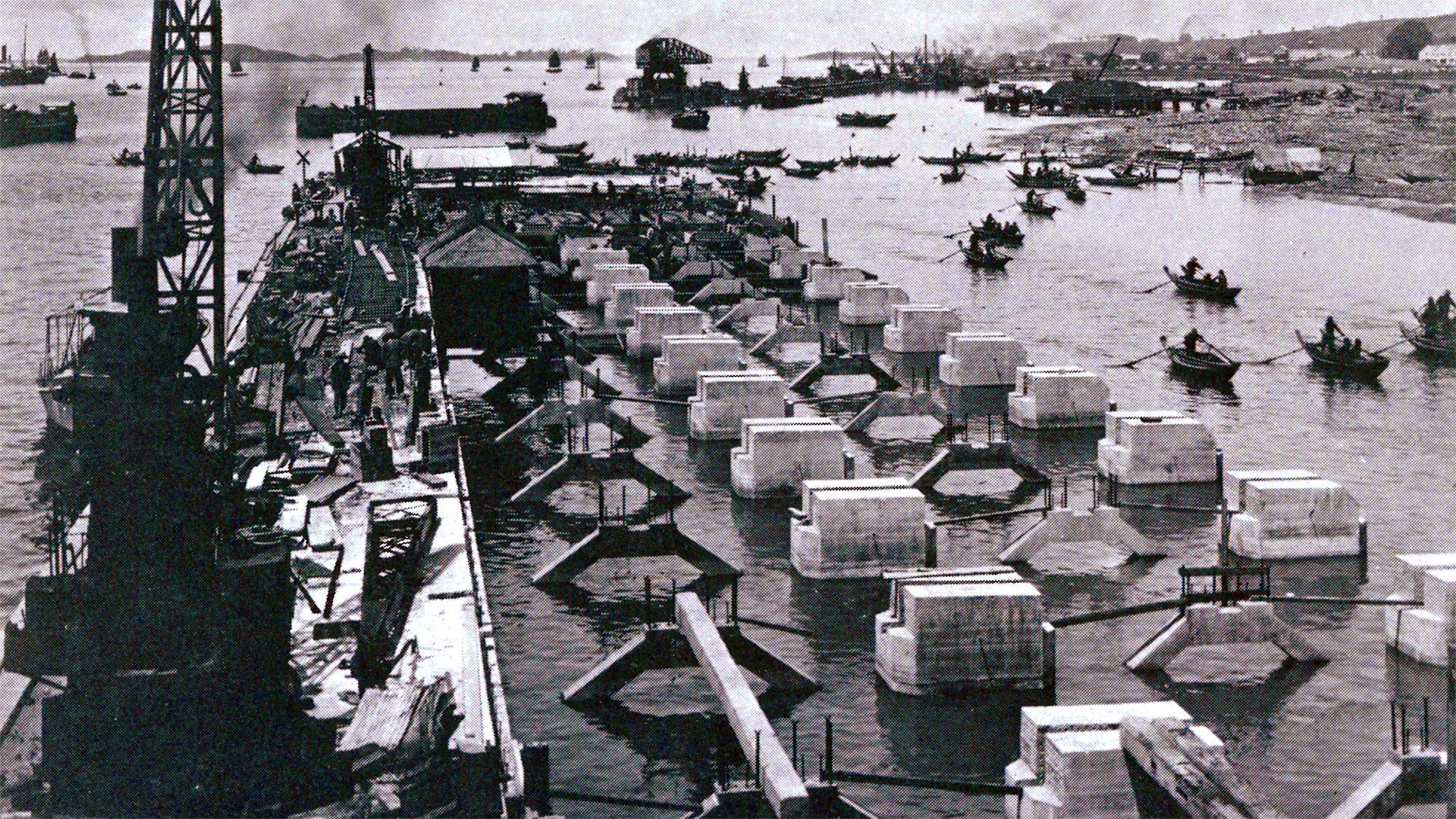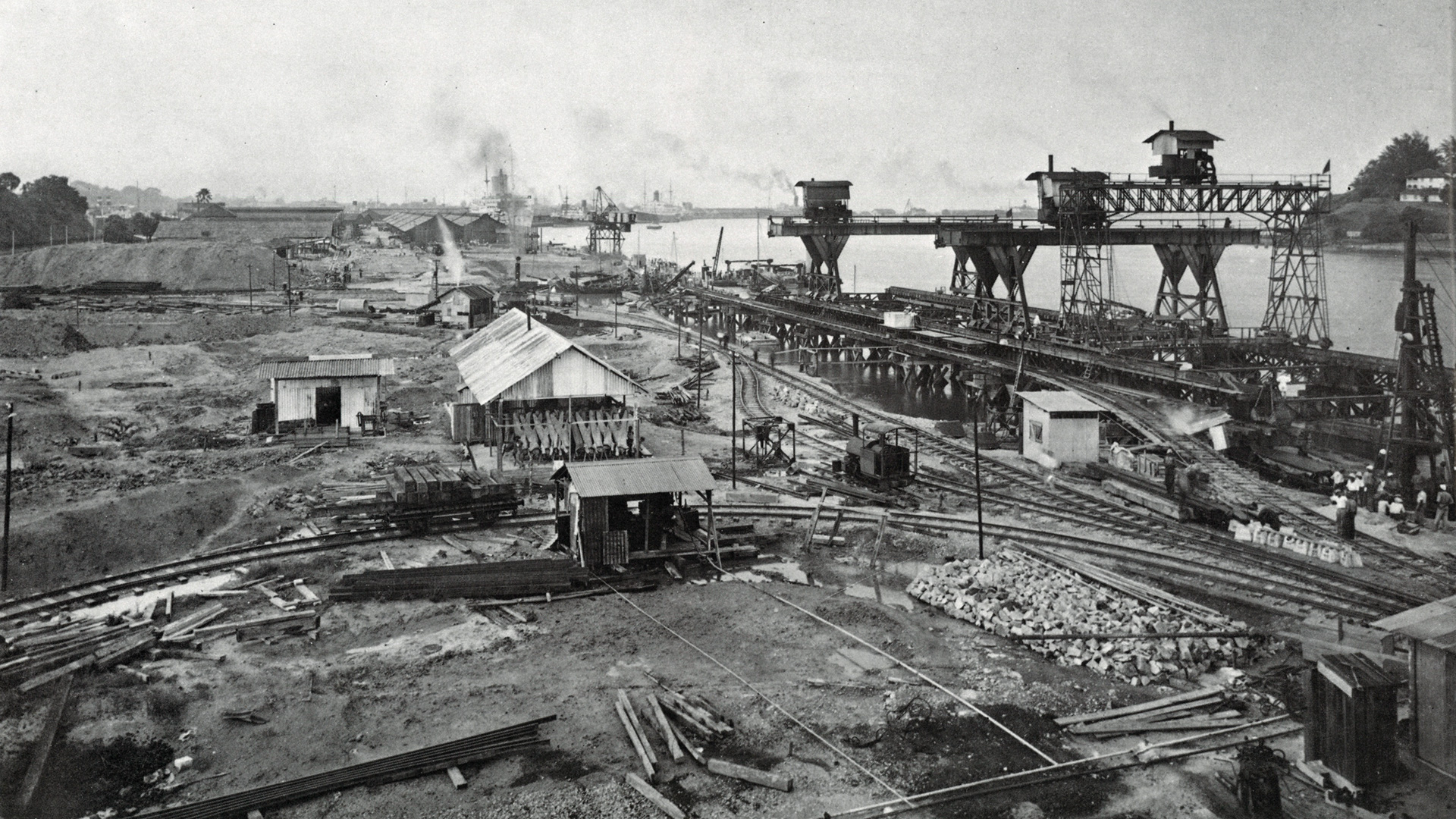Communication between Keppel Harbour and the town centre was improved in 1907 with the extension of the Tank Road – Kranji Railway that provided a service for the next 25 years.
The year 1907 also saw the beginning of the second phase of the Telok Ayer reclamation and the construction of the Offshore Mole that led to the development of yet another gateway for the Port of Singapore. The mile-long Mole, an artificial breakwater of granite rubble, was completed in 1914 and it offered protection for some 40 coastal vessels during the north-east monsoon.
On the landward side, Telok Ayer Basin (now, Telok Ayer Wharves) took form as a line of wharves for coastal vessels with an opening in the centre leading into a tidal basin for lighters. Thus by 1932, when Telok Ayer Basin was formally declared open, the Port of Singapore encompassed the Singapore River, Telok Ayer Basin and Keppel Harbour, and the port limits covered some 36 1/2 sq miles (23,168 acres).
Port facilities in Keppel Harbour were much enhanced by the Singapore Harbour Board. The entire wharf frontage built originally of wood was demolished and replaced with concrete structures. Facilities for bonded storage and cold storage and for the bulk storage of vegetable oil and latex were built. Quick-working portal electric cranes, elevating platform trucks and forklift trucks were introduced for cargo handling. A new dock, the King’s Dock was built. Coaling was mechanised and shore mains were laid for the supply of bunker fuel oil and water. The entire premises were connected by a railway system linked with the Federated Malay States Railways. A floating crane, salvage tug, floating coal plant, fire float and a fleet of harbour tugs, lighters and steel barges were introduced to perform ancillary services. By-laws and a tariff of rates and charges were formally introduced. The port limits were extended and re-defined by the Government in accordance with the Singapore Port Rules of 1936.
The developments which were however to gain the greatest significance in the years ahead were the establishment of oil storage and bunkering facilities of the Asiatic Petroleum Co at Pulau Bukom and the Standard Vacuum Oil Co at Pulau Sebarok and the opening of ship repair facilities at H.M. Naval Dockyard in Sembawang.
During the Pacific War (1941-45) about 70% of the warehouses in Keppel Harbour suffered damage from bombing raids and much of the machinery and equipment in the dockyards fell into disrepair. Port waters became encumbered with sunken craft and maintenance of port installations and ancillary facilities came to a standstill. When the Singapore Harbour Board resumed control in 1946, it was faced not only with the task of physical re-construction but also with the problem of restoring the full complement of portworkers. The port had also to cope with a sudden influx of heavy traffic transporting food and other essentials which were so necessary to alleviate the war time sufferings of the people of Malaysia and Singapore. With the restoration of port facilities and the eventual resumption of passenger and cargo services, the shipping tonnages steadily mounted from 20.4 million NRT in 1947 to 82.9 million NRT in 1963.
On 1 Apr 1964, the Port of Singapore Authority (PSA) was formed to take over the functions, assets and liabilities of the Singapore Harbour Board. At that time, its facilities were confined to some five kilometres of wharves and 160,000 square metres of transit sheds and warehouses at Telok Ayer and Keppel Harbour. The main type of cargo then handled was break-bulk general cargo, with small volumes of bulk vegetable oil and latex. (Note: PSA dropped the name of “Port of Singapore Authority” in 1997 when it became a corporatised entity. The company should be referred to as “PSA International” or simply “PSA”.)



